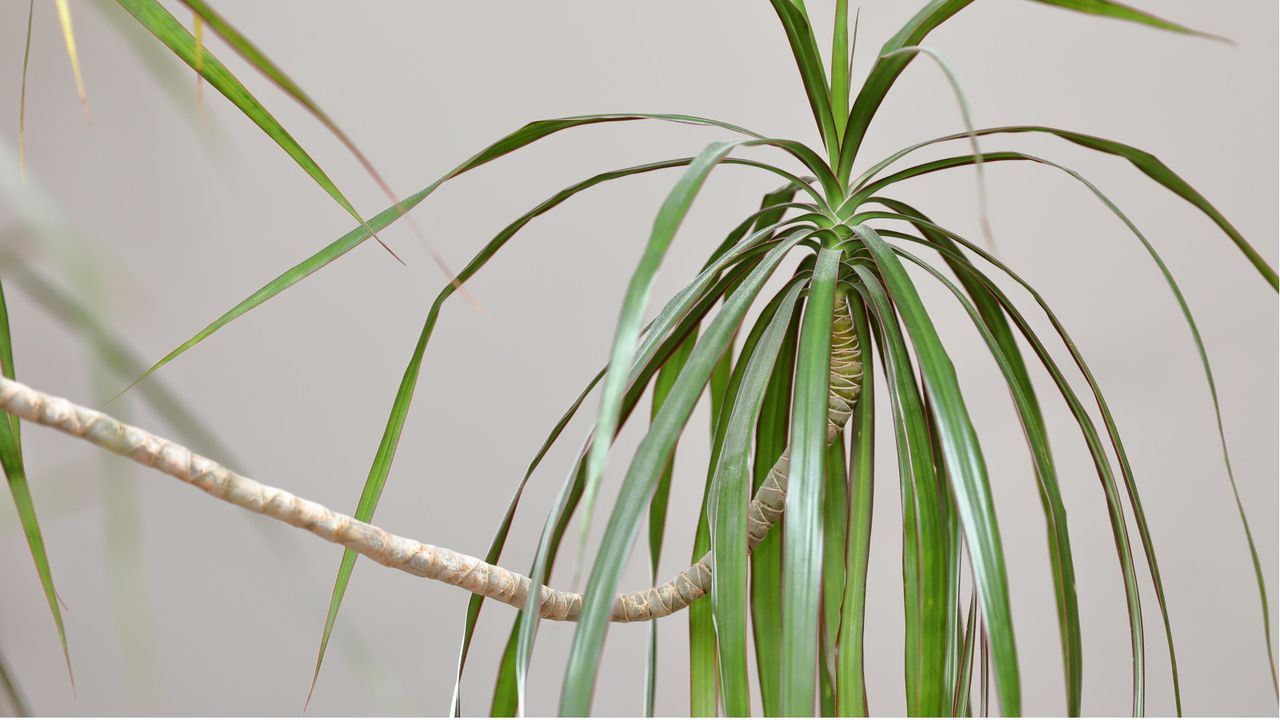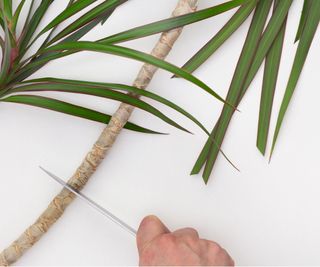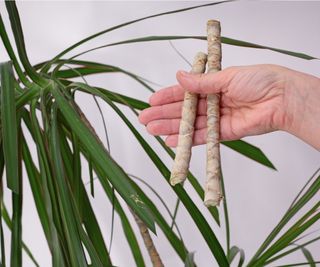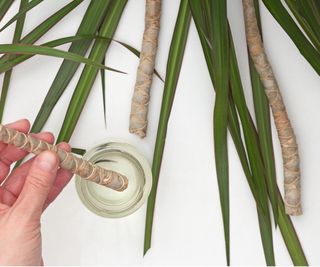How to propagate a dragon tree in 3 simple steps – plus advice from a houseplant expert on how to get it right first time
The second step will make or break your propagation success


Being able to multiply your houseplants is not only a fun thing to do, it's also a simple way to get more indoor plants for free. Some houseplants are easier to propagate than others, but equipped with the right tools and knowledge, you can multiply just about any indoor plant - including propagating a dragon tree.
Dragon trees certainly aren't one of the easiest houseplants to grow from cuttings, but just like dragon tree care, you can learn how to do it successfully by taking on board some expert tips. You also need to be able to provide an optimal propagating environment, so ensure you have a bright, warm spot ready in your home.
Here, a houseplant expert reveals three simple steps to propagate a dragon tree successfully, with advice on how to get it right first time.
3 steps to propagate a dragon tree
There are a few houseplant propagation mistakes to be aware of before trying to propagate a dragon tree. This includes taking cuttings from an unhealthy plant, which can be avoided by giving your existing dragon tree optimal care. With that being said, follow these steps to multiply your dragon tree:
1. Take a cutting from your dragon tree

Dragon trees have a trunk-like stem and are considered woody. For this reason, you need to employ the same techniques as taking hardwood cuttings in your yard.
'Cut a five-to-six inch section - or slightly longer - from the top of the stem,' advises Nastya Vasylchyshyna, a resident botany expert at Plantum.
In order to do this, you'll need to have essential pruning tools to hand. These Fiskars bypass pruning shears from Amazon would work well for the woodiness of a dragon tree, as would a sharp knife.
Take care to avoid plant cuttings mistakes by first cleaning your gardening tools and cleaning them after use, too. This helps prevent the spread of potential houseplant pests and diseases.

Nastya is a professional botany expert for the Plantum app that helps identify plants and plant diseases and provides care recommendations. Her specialization is plant morphology, phytopathology, and plant physiology.
2. Prepare your dragon tree cutting

It's always important to take some time to prepare plant cuttings for propagation to avoid a range of issues. There are a few things Nastya says to do:
'Remove any bottom leaves from your cutting, up to half of the total leaf mass,' she advises. The reason for doing this is because lower leaves will end up submerged in your propagating medium, leading to rot and wasting the plant's energy on keeping foliage alive rather than developing roots.
It should be easy to pinch these leaves off with your fingers, but if it's proving to be a bit more tough, you can also use scissors (from Walmart).
Something else you might consider when preparing your cutting is using a rooting hormone. It's a substance containing chemicals and nutrients that imitate the root-growing hormones in plants. It's a helpful tool to use for woodier plants which typically take longer to develop roots from cuttings than soft stems.
Simply dip the end of your cutting into a rooting hormone powder (From Amazon) or gel, ensuring an even layer is applied.
3. Place the cutting in water or soil

It's possible to propagate a dragon tree either in soil or in water, it all depends on your preference. For woodier plants, soil can be a quicker method:
'Insert the cutting into the center of a small container filled with evenly moist soil,' Nastya describes. 'Gently compact the soil around the edges to secure the cutting, but avoid pressing down the entire potting mix - the soil should stay loose,' she says. Make sure to also keep the soil consistently moist going forward.
You should opt for a well-draining potting mix to propagate houseplants - like this potting mix from Amazon. This will help control moisture levels so your cutting isn't sitting in oversaturated soil, potentially leading to houseplant root rot.
'Alternatively, you can root the cutting in water,' Nastya says. 'Use a tall, narrow container filled with enough water to cover the base of the stem while keeping the leaves dry,' she describes.
Using a tall container - like this glass propagation vase from Amazon - will support the structural stem of a dragon plant, preventing it from falling over.
It's important to avoid water propagation mistakes with this technique by replacing the water as it depletes and becomes dirty. Failing to do so can make your cutting susceptible to damage from pests and diseases, or cause growth of algae.
Whether you choose to use soil or water, make sure to keep your cutting in a bright, warm spot to encourage root development. 'You should then see your dragon tree cutting grow its first roots within two or three weeks and a fully developed root system in one or two months,' Nastya says.
FAQs
When is the best time to propagate a dragon tree?
The best time to propagate houseplants is when they're in their active growth season. Dragon trees are no different - Nastya Vasylchyshyna, resident botany expert at Plantum, says: 'Propagate in spring or early summer.' Although, there are some easy houseplants to propagate in fall and winter, too.
If you're keen to have a new dragon tree sooner, it is possible to speed up houseplant propagation. Try using a heat mat (from Amazon) or place your cutting in an indoor greenhouse to provide plenty of light and warmth.
Sign up to the Homes & Gardens newsletter
Design expertise in your inbox – from inspiring decorating ideas and beautiful celebrity homes to practical gardening advice and shopping round-ups.

Tenielle is a Gardens News Writer at Homes & Gardens. She holds a qualification in MA Magazine Journalism and has over six years of journalistic experience. Before coming to Homes & Gardens, Tenielle was in the editorial department at the Royal Horticultural Society and worked on The Garden magazine. As our in-house houseplant expert, Tenielle writes on a range of solutions to houseplant problems, as well as other 'how to' guides, inspiring garden projects, and the latest gardening news. When she isn't writing, Tenielle can be found propagating her ever-growing collection of indoor plants, helping others overcome common houseplant pests and diseases, volunteering at a local gardening club, and attending gardening workshops, like a composting masterclass.
You must confirm your public display name before commenting
Please logout and then login again, you will then be prompted to enter your display name.
-
 Denise Richards' marble kitchen taps into an enduring design aesthetic that's bigger than ever for 2025 – experts love its versatility and its 'luxury finish'
Denise Richards' marble kitchen taps into an enduring design aesthetic that's bigger than ever for 2025 – experts love its versatility and its 'luxury finish'Denise Richards' kitchen features white marble walls and countertops, which experts say elevate the space and provide visual interest
By Hannah Ziegler Published
-
 9 inspiring ways this L.A. redesign adds character to a once-bland and boring home
9 inspiring ways this L.A. redesign adds character to a once-bland and boring homeThis once characterless family home now exudes luxury and personality – here's what it taught us
By Karen Darlow Published